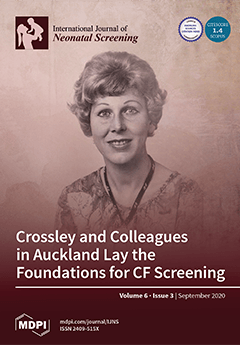Open AccessArticle
Pulse Oximetry and Congenital Heart Disease Screening: Results of the First Pilot Study in Morocco
by
Nadia El Idrissi Slitine, Fatiha Bennaoui, Craig A. Sable, Gerard R. Martin, Lisa A. Hom, Amal Fadel, Soufiane Moussaoui, Nadir Inajjarne, Drissi Boumzebra, Youssef Mouaffak, Said Younous, Lahcen Boukhanni and Fadl Mrabih Rabou Maoulainine
Cited by 15 | Viewed by 5040
Abstract
Congenital heart disease (CHD) is the most common congenital malformation. Diagnosis of critical congenital heart disease (CCHD), the most severe type of congenital heart disease, in a newborn may be difficult. The addition of CCHD screening, using pulse oximetry, to clinical assessment significantly
[...] Read more.
Congenital heart disease (CHD) is the most common congenital malformation. Diagnosis of critical congenital heart disease (CCHD), the most severe type of congenital heart disease, in a newborn may be difficult. The addition of CCHD screening, using pulse oximetry, to clinical assessment significantly improves the rate of detection. We conducted a pilot study in Morocco on screening neonates for critical congenital heart disease. This study was conducted in the maternity ward of Mohammed VI University Hospital of Marrakesh, Morocco, and included asymptomatic newborns delivered between March 2019 and January 2020. The screening of CCHD was performed by pulse oximetry measuring the pre- and post-ductal saturation. Screening was performed on 8013/10,451 (76.7%) asymptomatic newborns. According to the algorithm, 7998 cases passed the screening test (99.82%), including one inconclusive test that was repeated an hour later and was normal. Fifteen newborns failed the screening test (0.18%): five CCHD, five false positives, and five CHD but non-critical. One false negative case was diagnosed at 2 months of age. Our results encourage us to strengthen screening for CCHD by adding pulse oximetry to the routine newborn screening panel.
Full article
►▼
Show Figures






